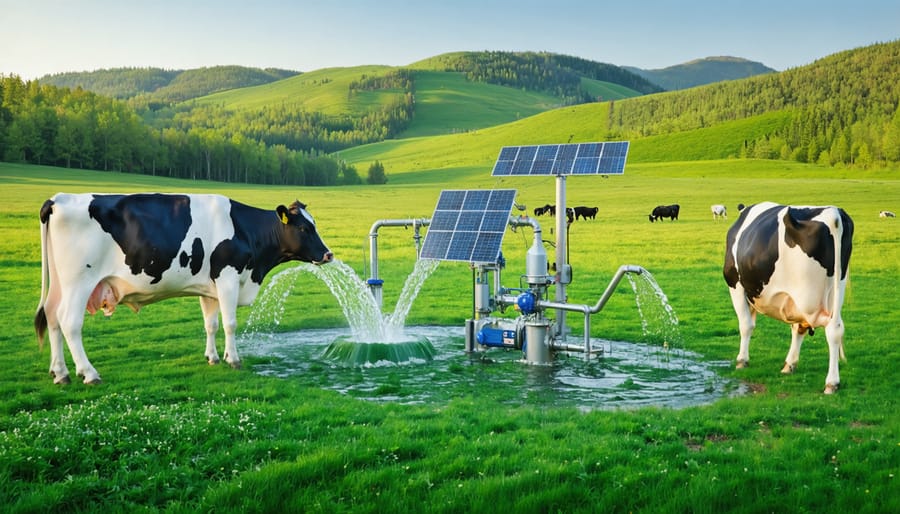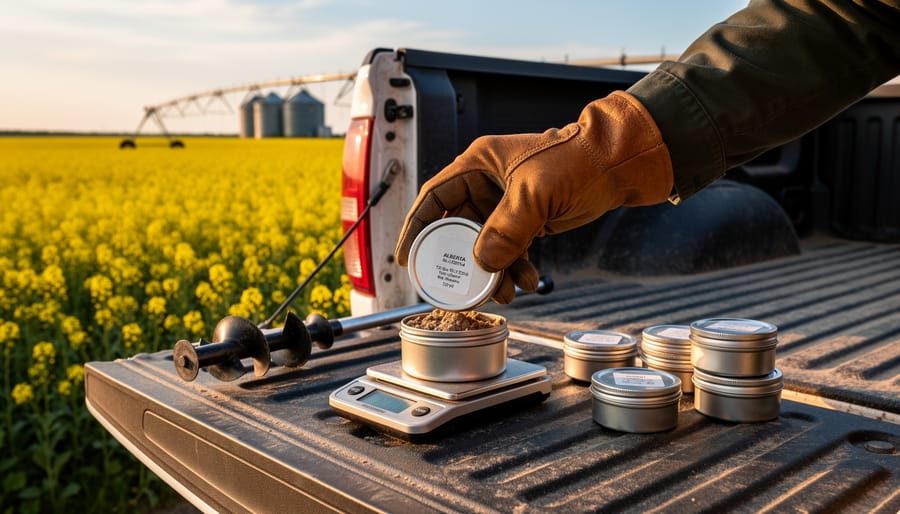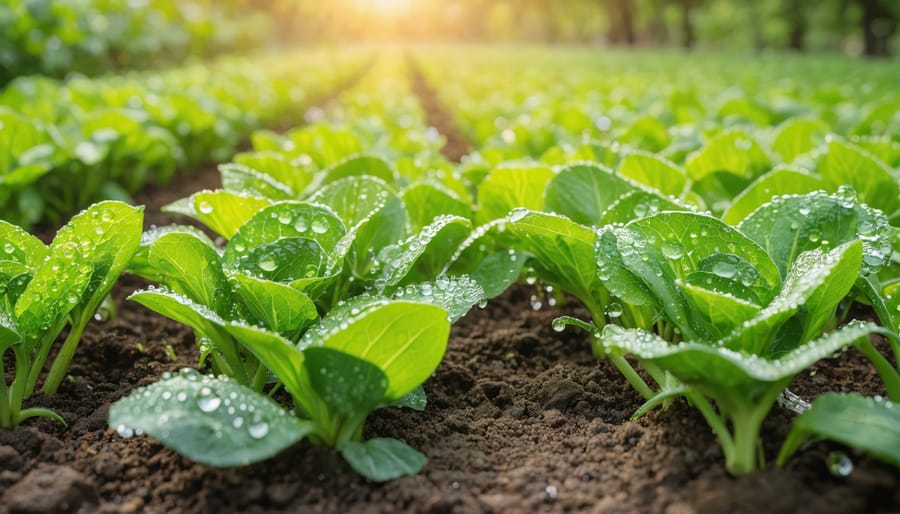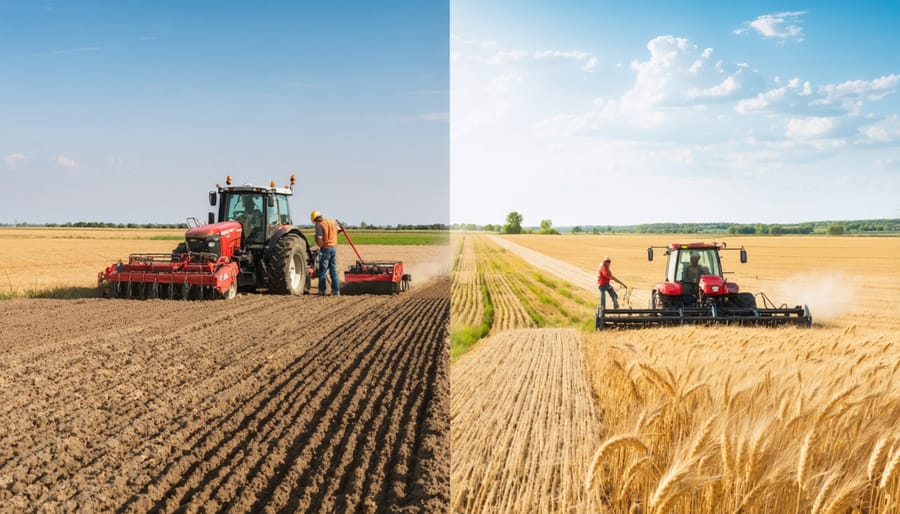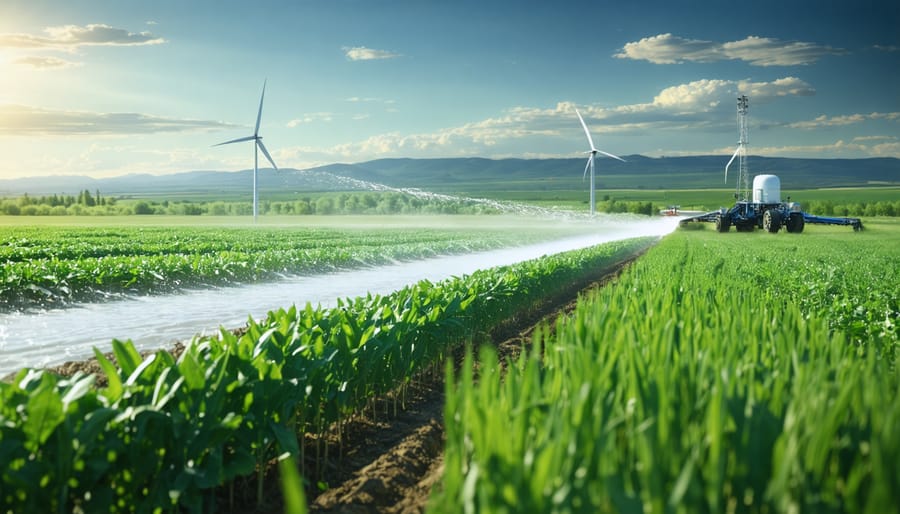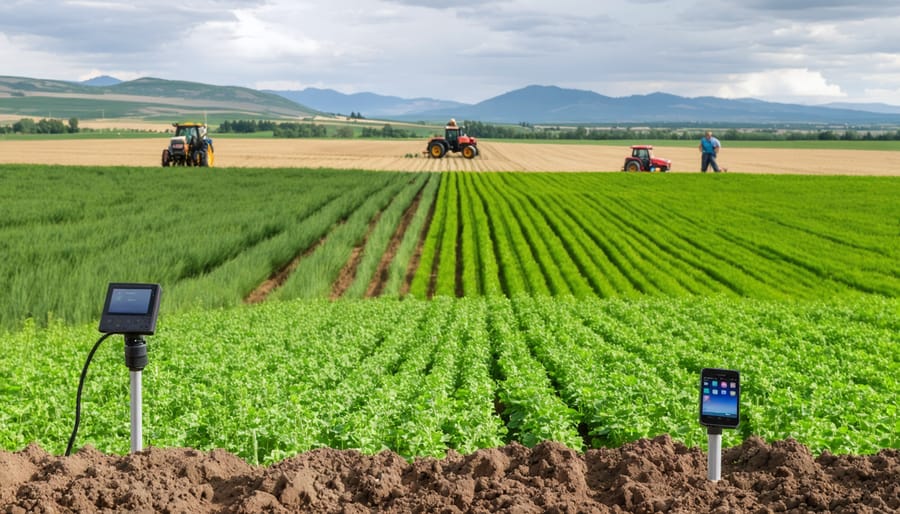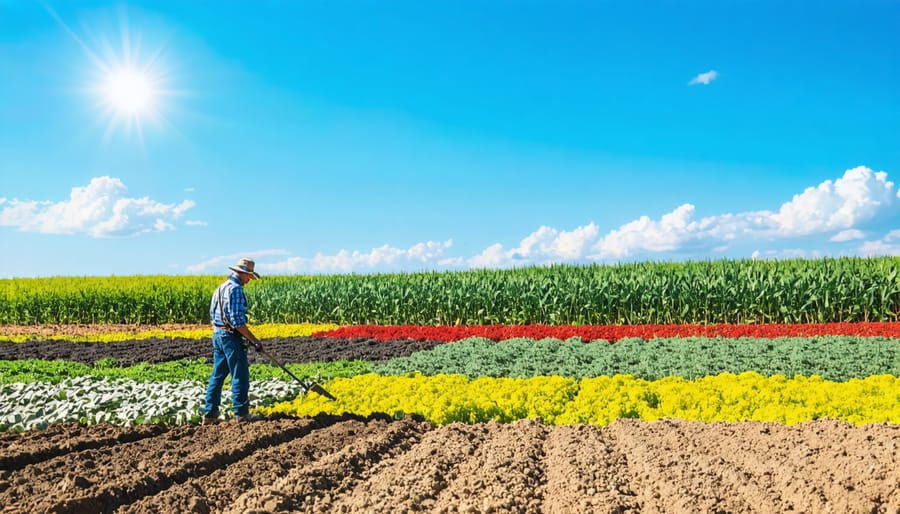Water sustains every aspect of livestock production, making efficient water management practices the cornerstone of successful Alberta farming operations. Each day, a single dairy cow requires up to 115 litres of clean water to maintain optimal milk production, while beef cattle need 45-65 litres depending on weather conditions and feed type. Managing this vital resource effectively not only ensures animal health and productivity but also protects farm profitability and environmental sustainability.
The quality and accessibility of livestock water directly impact weight gain, reproduction rates, and overall herd health. Alberta’s diverse climate presents unique challenges, from frozen water sources in winter to drought conditions in summer, requiring farmers to implement robust water delivery systems that work year-round. By understanding and optimizing water management strategies, livestock producers can reduce operational costs while maintaining the highest standards of animal care and environmental stewardship.
This practical guide explores proven solutions for livestock water management, drawing from successful Canadian farm operations and current agricultural research to help you implement sustainable water systems that work in Alberta’s unique conditions.
Water Requirements by Livestock Type
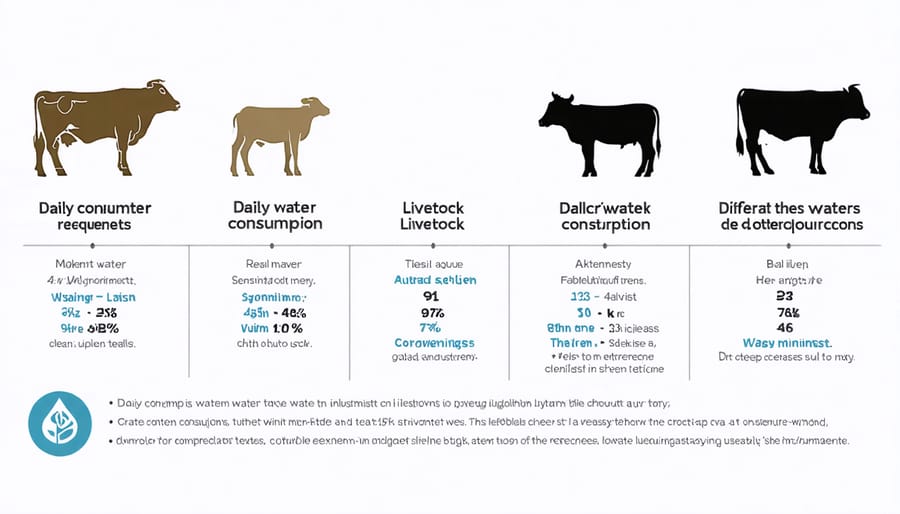
Cattle and Dairy Operations
Water requirements for cattle vary significantly based on their life stage and production purpose. Dairy cows typically need 80-160 litres of water daily, with the highest demand during peak lactation periods. A lactating dairy cow producing 40 litres of milk per day may require up to 200 litres of water in warm weather conditions.
Beef cattle have different requirements, with mature cows needing 40-70 litres daily during pregnancy and 60-100 litres while nursing calves. Growing calves and yearlings consume approximately 25-45 litres per day, with requirements increasing as they mature. During Alberta’s hot summer months, these requirements can increase by 30-50%.
Weather conditions significantly impact water consumption. In temperatures above 25°C, cattle may increase their water intake by up to 2.5 times their normal consumption. During winter months, when temperatures drop below -20°C, ranchers must ensure water sources remain ice-free and accessible.
For optimal herd health and production, maintaining consistent water availability is crucial. Many Alberta ranchers implement dual water systems, combining traditional dugouts with heated winter waterers to ensure year-round access. This approach has proven particularly effective in our province’s variable climate conditions.
Swine and Poultry Requirements
Pigs and poultry have distinct water requirements that vary based on their growth stage and production purpose. For swine operations, growing pigs typically consume 5-12 litres of water per day, while lactating sows may require up to 30 litres daily. Temperature plays a crucial role, with consumption increasing by approximately 10% for every 2°C rise above 21°C.
In poultry operations, broiler chickens need about 250 mL of water per day at market age, while laying hens require 250-300 mL daily to maintain optimal egg production. During hot weather, consumption can double, making reliable water access essential for both welfare and productivity.
Water delivery systems for these animals should be carefully monitored. Nipple drinkers are common in both industries, with recommended flow rates of 1-1.5 L/minute for pigs and 150 mL/minute for poultry. Regular maintenance of these systems helps prevent wastage and ensures consistent supply.
Alberta producers should consider installing water meters to track consumption patterns and identify potential issues early. During winter months, particular attention should be paid to preventing freezing in water lines, a common challenge in our climate.
Water Quality Standards for Livestock
Key Water Quality Indicators
Maintaining proper water quality is crucial for livestock health and productivity. The key indicators that Alberta farmers should regularly monitor include pH levels, total dissolved solids (TDS), and specific mineral concentrations.
For most livestock, water pH should remain between 6.5 and 8.5. Outside this range, animals may reduce their water intake, leading to decreased performance. TDS levels should typically stay below 3,000 mg/L for cattle and 2,000 mg/L for other livestock species.
Essential minerals to monitor include:
– Calcium: 100-200 mg/L
– Magnesium: below 400 mg/L
– Sodium: below 800 mg/L
– Sulfates: below 1,000 mg/L
– Nitrates: below 100 mg/L
Regular testing is particularly important during drought conditions when mineral concentrations can become concentrated. Local agricultural extension offices across Alberta provide water testing services and interpretation of results.
Blue-green algae levels should be monitored during summer months, as these can be toxic to livestock. Bacterial contamination, measured through coliform counts, should be minimal, with total coliforms not exceeding 1,000 per 100 mL for adult cattle.
Temperature also affects water quality and consumption. Ideal drinking water temperature ranges from 10-15°C, though livestock can adapt to slight variations. In winter, ensure water sources don’t freeze by using appropriate heating systems common to Alberta operations.
Testing and Monitoring Systems
Regular monitoring of livestock water sources is crucial for maintaining herd health and productivity. Alberta farmers can implement several water quality testing methods to ensure their animals have access to safe drinking water.
Start with weekly visual inspections of water sources, checking for clarity, unusual colours, or floating debris. Use pH test strips to measure acidity levels, which should typically range between 6.5 and 8.5 for livestock. Consider investing in a portable TDS (Total Dissolved Solids) meter to monitor salt content, especially important during Alberta’s dry seasons.
Keep detailed records of your testing schedule and results. Many local agricultural extension offices provide water testing services, and it’s recommended to conduct comprehensive laboratory analysis at least twice yearly. These tests can identify potential issues like bacterial contamination or mineral imbalances before they affect your livestock.
Install automated monitoring systems at key water points to track consumption patterns and alert you to potential problems. Simple float alarms can signal when water levels drop too low, while more advanced systems can measure temperature and electrical conductivity in real-time.
Work with your local veterinarian to develop a testing protocol that suits your operation’s specific needs. Remember that different livestock species may have varying sensitivities to water quality parameters, so adjust your monitoring approach accordingly.

Efficient Water Delivery Systems
Automated Watering Systems
Modern automated watering solutions have revolutionized livestock management across Alberta’s farms. These systems combine sensors, timers, and digital controls to ensure consistent water availability while reducing labour and operating costs.
Popular options include frost-free nose pumps, which work well in our cold climate, and solar-powered watering systems that are particularly useful for remote pastures. Many Alberta ranchers have found success with automatic waterers equipped with thermostats and heating elements, ensuring year-round operation even during harsh winters.
These systems often feature float valves that maintain optimal water levels and can be connected to smartphones for remote monitoring. Real-time alerts notify farmers about potential issues like low water pressure or system malfunctions, allowing for quick responses to prevent livestock stress.
Installation costs typically range from $2,000 to $10,000, depending on the system’s complexity and herd size. However, many farmers report recovering their investment within two to three years through reduced labour costs and improved herd health. The Alberta Environmental Farm Plan offers cost-sharing programs to help offset initial expenses.
For best results, consider working with local agricultural technology specialists who understand our unique climate challenges and can recommend appropriate systems for your specific operation. Regular maintenance checks, especially before winter, will ensure reliable performance throughout the year.
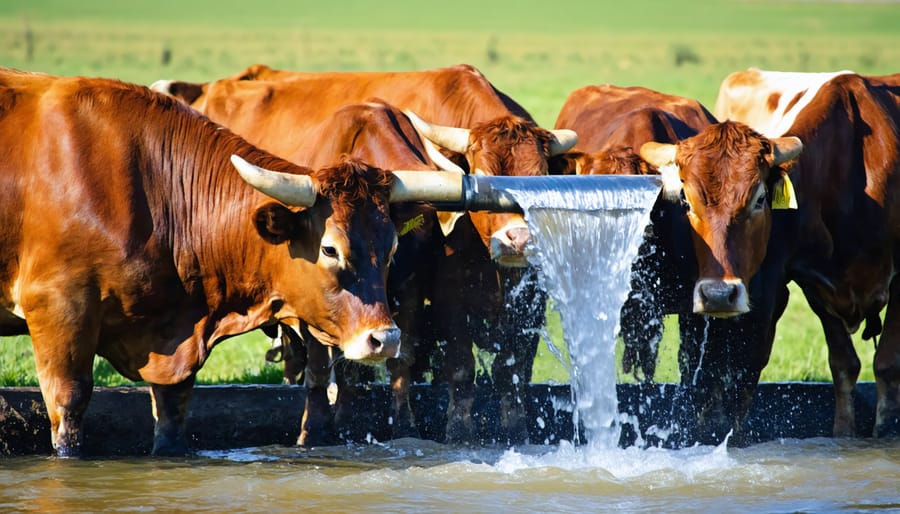
Winter-Ready Infrastructure
Alberta’s harsh winters demand robust infrastructure to ensure consistent water access for livestock. Insulated waterers and heated troughs are essential investments, helping prevent freezing even during extreme cold snaps. For optimal performance, install waterers on concrete pads with proper drainage to prevent ice buildup and maintain stable footing for animals.
Underground water lines should be buried below frost depth, typically 2.4 meters (8 feet) in Alberta, to prevent freezing. Implementing redundant systems, such as backup power sources and secondary water access points, ensures continuous water availability during emergencies or equipment failures.
Many Alberta ranchers have found success with energy-efficient heating systems, including solar-powered units and geothermal solutions. These alternatives can significantly reduce operating costs while maintaining reliable water access. Thermal balls or floating insulation devices can help minimize heat loss and prevent surface freezing in larger troughs.
Regular maintenance is crucial during winter months. Develop a daily inspection routine to check for ice formation, ensure heating elements are functioning properly, and verify that all components are weatherproof. Consider installing remote monitoring systems to track water temperature and flow rates, allowing for quick response to potential issues.
Storage tanks and cisterns should be properly insulated and, when possible, located in heated structures. This additional protection helps maintain consistent water temperature and prevents system damage during extreme weather events.
Water Conservation Strategies
Leak Detection and Prevention
Regular monitoring of your livestock water system can prevent significant water waste and ensure consistent supply to your animals. Start by conducting weekly visual inspections of all water lines, joints, and drinking points. Look for obvious signs like wet spots, unusually green patches in dry areas, or unexplained decreases in water pressure.
Installing water meters at strategic points helps track usage patterns and quickly identify unusual consumption that might indicate leaks. Many Alberta farmers find that monitoring water usage during off-peak hours (like midnight to 4 AM) can reveal hidden leaks when livestock aren’t drinking.
Simple maintenance practices can prevent many common issues. Replace worn gaskets and seals before they fail, and ensure proper insulation of pipes to prevent freezing damage during harsh Alberta winters. Modern water conservation strategies include installing pressure regulators to maintain optimal system pressure and prevent stress on pipes and fittings.
For larger operations, consider investing in automated leak detection systems that use sensors to monitor pressure changes and flow rates. These systems can alert you immediately when anomalies occur, potentially saving thousands of litres of water and preventing service disruptions to your livestock.
Keep a maintenance log to track repairs and replacements, helping you identify recurring problems and plan preventive maintenance. Many successful Alberta ranchers schedule comprehensive system inspections during spring and fall when weather conditions are optimal for repairs.
Water Recycling Opportunities
Water recycling in livestock operations presents several practical opportunities to reduce water consumption while maintaining high standards of animal care. Here in Alberta, many successful farmers have implemented innovative recycling systems that help conserve our precious water resources.
One effective approach is capturing and treating parlour wash water from dairy operations. After proper filtration and treatment, this water can be safely reused for cleaning yards and equipment. Several dairy farms near Red Deer have reported saving up to 30% on their water usage through these systems.
Rainfall collection systems are another valuable opportunity, particularly for operations with large roof areas. The collected water can be stored in tanks or dugouts and used for livestock drinking water after appropriate treatment. During our prairie summers, this approach can provide a significant supplementary water source.
Processing facility wastewater can also be recycled for irrigation after proper treatment. Many Alberta beef operations are now using treated wastewater to irrigate feed crops, creating a sustainable cycle of water usage. This practice must follow provincial guidelines to ensure safety, but when properly implemented, it can reduce freshwater consumption by up to 40%.
Cooling system water presents another recycling opportunity. By implementing closed-loop cooling systems, operations can reuse water multiple times before it needs replacement. This is particularly relevant for intensive livestock operations where temperature control is crucial.
Remember to regularly test recycled water quality and maintain treatment systems properly. Local agricultural extension offices can provide guidance on water testing and treatment protocols specific to your operation type. Many successful recycling systems start small and expand as operators gain experience with the technology.
Managing water resources effectively for livestock is crucial for the success of Alberta’s farming operations. Throughout this guide, we’ve explored the essential aspects of water management, from understanding daily consumption needs to implementing efficient delivery systems and maintaining water quality.
Remember that proper water management isn’t just about meeting basic needs – it’s about creating sustainable systems that benefit both your livestock and your bottom line. Start by conducting a thorough assessment of your current water infrastructure and usage patterns. Consider implementing automated monitoring systems to track consumption and detect potential issues early.
Take advantage of local resources and expertise. Connect with your regional agricultural extension office or join farmer-led watershed stewardship groups to share experiences and learn from others. Many Alberta producers have successfully implemented water conservation strategies while maintaining healthy herds.
Key action steps include:
– Regular testing of water quality
– Installing efficient watering systems
– Developing drought contingency plans
– Protecting water sources from contamination
– Maintaining detailed records of water usage
– Participating in water stewardship programs
By taking a proactive approach to water management, you’re not just ensuring the health and productivity of your livestock – you’re contributing to the long-term sustainability of Alberta’s agricultural community. Remember that small improvements in water management can lead to significant benefits for your operation and the environment.
Make water management a priority in your farm planning, and don’t hesitate to seek support from local agricultural experts and fellow producers. Together, we can build more resilient and sustainable livestock operations across Alberta.

